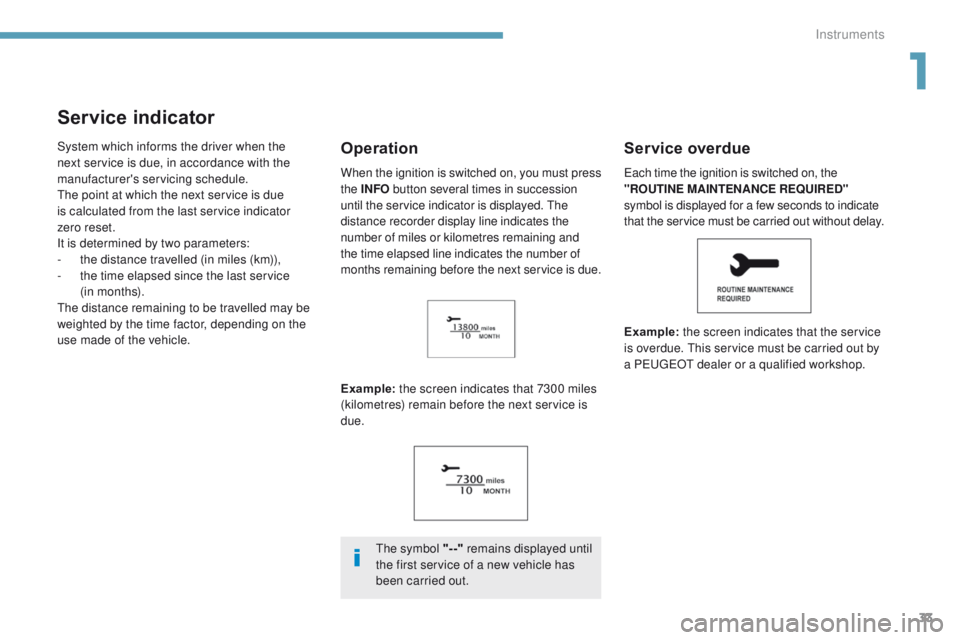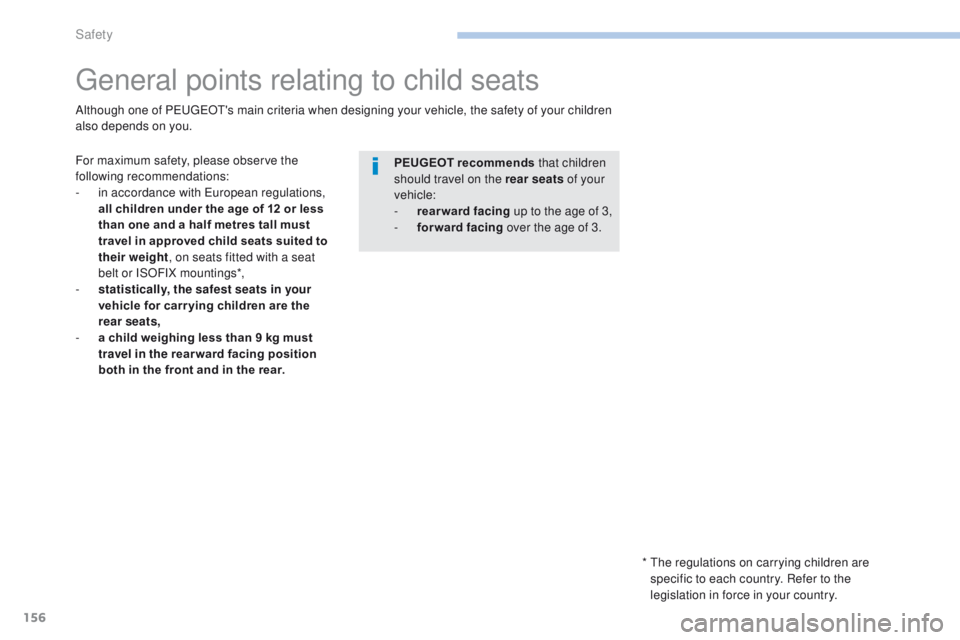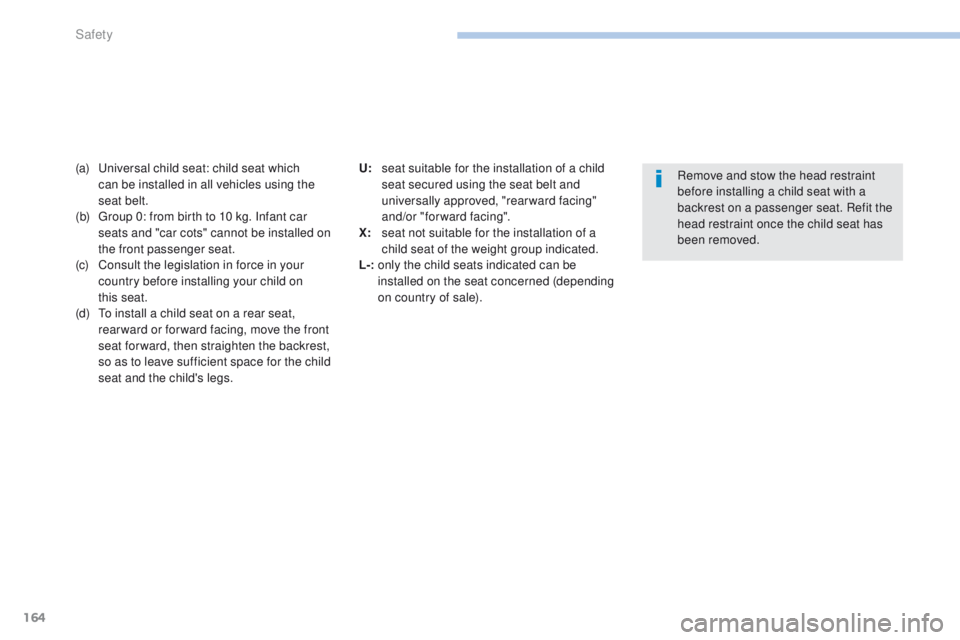Page 5 of 368

.
4008_en_Chap00a_sommaire_ed01-2016
general safety recommendations 141
Direction indicators
1
42
Hazard warning lamps
1
42
Hor n
14
2
Braking assistance systems
1
43
tr
ajectory control systems
1
45
Front seat belts
1
47
Airbags
151
Child seats
1
56
Deactivating the passenger's front airbag
1
58
ISOFIX child seats
1
65
Child lock
1
71
Fuel tank
1
73
Snow chains
1
75
Automatic power cut-off to accessories
176
Changing a wiper blade
1
76
to
wing a trailer
1
77
Fitting roof bars
1
79
Bonnet
180
Petrol engines
1
81
Diesel engines
1
82
Checking levels
1
83
Checks
18
6te mporary puncture
repair kit 1 89
Changing a wheel
1
93
Changing a bulb
1
99
Changing a fuse
2
05
12 V battery
2
11
to
wing the vehicle
2
15
Running out of fuel (Diesel)
2
18
Petrol engines
2
19
Petrol weights
2
20
Diesel engines
2
25
Diesel weights
2
26
Dimensions
231
Identification markings
2
33Bluetooth® telephone with voice
recognition 23 5
to
uch screen A
uD
IO -
t
e
LeM
A
tI
C system
2
47
tOuC
H SCR
e
e
N AuD
IO - CD system
2
89
A
uD
IO - CD system
3
13
Safety
Practical information In the event of a breakdown
te
chnical dataAudio equipment and telematics
Alphabetical index
Contents
Page 11 of 368
9
4008_en_Chap00b_vue-ensemble_ed01-2016
Maintenance - technical data
engine compartment
fuses 2 05, 208 -210
Running out of fuel, Diesel
2
18
Checking levels
18
3 -185
-
oil
-
b
rake fluid
-
coolant
-
s
creenwash/headlamp wash fluid
Changing bulbs
1
99-204
-
front
-
rear Petrol engines
2
19
Petrol weights
2
20 -225
Diesel engines
2
26
Diesel weights
2
27-230
Dimensions
231
Off-road performance
2
32
Identification markings
2
33
Bonnet
180
Petrol engine compartment
1
81
Diesel engine compartment
1
82 Batter y
211-214
Automatic power cut-off to accessories
176
Checking components
1
86-188
-
b
attery electrolyte
-
a
ir filter
-
o
il filter
-
p
article filter (Diesel)
-
b
rake pads / discs
.
Over view
Page 35 of 368

33
4008_en_Chap01_Instruments-de-bord_ed01-2016
Service indicator
System which informs the driver when the
next service is due, in accordance with the
manufacturer's servicing schedule.
th
e point at which the next service is due
is calculated from the last service indicator
zero
reset.
It is determined by two parameters:
-
t
he distance travelled (in miles (km)),
-
t
he time elapsed since the last service
(in months).
th
e distance remaining to be travelled may be
weighted by the time factor, depending on the
use made of the vehicle.
Example: the screen indicates that 7300 miles
(kilometres) remain before the next service is
due.Service overdue
Example: the screen indicates that the service
is overdue. th is service must be carried out by
a P
e
uge
Ot
dealer or a qualified workshop.
Operation
the symbol "--" remains displayed until
the first service of a new vehicle has
been carried out.
ea
ch time the ignition is switched on, the
"ROUTINE MAINTENANCE REQUIRED"
symbol is displayed for a few seconds to indicate
that the service must be carried out without delay.
When the ignition is switched on, you must press
the
INFO button several times in succession
until the service indicator is displayed. t
h
e
distance recorder display line indicates the
number of miles or kilometres remaining and
the time elapsed line indicates the number of
months remaining before the next service is due.
1
Instruments
Page 158 of 368

156
4008_en_Chap06_securite_ed01-2016
general points relating to child seats
For maximum safety, please observe the
following recommendations:
-
i
n accordance with e
u
ropean regulations,
all children under the age of 12 or less
than one and a half metres tall must
travel in approved child seats suited to
their weight , on seats fitted with a seat
belt or ISOFIX mountings*,
-
s
tatistically, the safest seats in your
vehicle for carr ying children are the
rear seats,
-
a c
hild weighing less than 9 kg must
travel in the rearward facing position
both in the front and in the rear. PEUGEOT recommends that children
should travel on the rear seats
of your
vehicle:
-
r
earward facing up to the age of 3,
-
fo
rward facing over the age of 3.
Although one of P
e
uge
Ot'
s main criteria when designing your vehicle, the safety of your children
also depends on you.
* t
h
e regulations on carrying children are
specific to each country. Refer to the
legislation in force in your country.
Safety
Page 165 of 368
163
4008_en_Chap06_securite_ed01-2016
Locations for child seats secured using the seat beltIn accordance with european regulations, this table indicates the options for installing child seats secured using a seat belt and universally approved (a)
in relation to the weight of the child and the seat in the vehicle.
Seat Weight of the child and indicative age
Less than 13 kg
(groups 0 (b) and 0+)
u
p t
o approx. 1 yearFrom 9 to 18 kg
(g r o u p 1)
From approx. 1 to 3 years
From 15 to 25 kg (group 2)
From approx. 3 to 6 years
From 22 to 36 kg
(group 3)
From approx. 6 to 10 years
Front passenger seat (c) with
passenger airbag activated X
XXX
Front passenger seat (c) with
passenger airbag deactivated L1
L2, L3 XX
Outer rear seats
(row 2) (d) U
UUU
Centre rear seat
(row 2) (d) L1
L2, L3 XX
6
Safety
Page 166 of 368

164
4008_en_Chap06_securite_ed01-2016
(a) universal child seat: child seat which can be installed in all vehicles using the
seat belt.
(b)
g
r
oup 0: from birth to 10 kg. Infant car
seats and "car cots" cannot be installed on
the front passenger seat.
(c)
C
onsult the legislation in force in your
country before installing your child on
this
seat.
(d)
t
o i
nstall a child seat on a rear seat,
rear ward or for ward facing, move the front
seat for ward, then straighten the backrest,
so as to leave sufficient space for the child
seat and the child's legs. Remove and stow the head restraint
before installing a child seat with a
backrest on a passenger seat. Refit the
head restraint once the child seat has
been removed.
U: s
eat suitable for the installation of a child
seat secured using the seat belt and
universally approved, "rear ward facing"
and/or "forward facing".
X:
s
eat not suitable for the installation of a
child seat of the weight group indicated.
L-:
o
nly the child seats indicated can be
installed on the seat concerned (depending
on country of sale).
Safety
Page 171 of 368

169
4008_en_Chap06_securite_ed01-2016
Locations for ISOFIX child seats
In accordance with european Regulations, this table indicates the options for installing ISOFIX child seats on seats in the vehicle fitted with ISOFIX
mountings.
In the case of universal and semi-universal ISOFIX child seats, the ISOFIX size category, determined by a letter between A and G , is indicated on the
child seat next to the ISOFIX logo.
Weight of the child / indicative age
Less than 10 kg (group 0)
u
p to approx. 6
monthsLess than 10 kg
(group 0)
Less than 13 kg
(group 0+)
up t
o approx. 1 yearFrom 9 to 18 kg (group 1)
From approx. 1 to 3 years
Type of ISOFIX child seat infant car seat "rearward facing"
"rearward facing""forward facing"
ISOFIX size categor y FG C D E C D A B B1
Universal and semi-universal ISOFIX child
seats which can be installed on the outer
rear seat s X
XI L1IL2 X IUF
I UF:
s
eat suitable for the installation of an I sofix Universal seat, " For ward facing" secured using the
"
to
p
t
e
ther" upper strap.
IL-: only the child seats indicated can be installed using the ISOFIX mountings.
For advice on securing of the "
to
p
t
e
ther" upper strap, refer to the "ISOFIX mountings" section.
X: seat not suitable for the installation of an ISOFIX seat of the size category indicated. Remove and stow the head restraint
before installing a child seat with a
backrest on a passenger seat. Refit the
head restraint once the child seat has
been removed.
6
Safety
Page 179 of 368

177
4008_en_Chap07_info-pratiques_ed01-2016
towing a trailer, a caravan, etc.
We recommend the use of genuine
PeugeOt towbars and their harnesses
that have been tested and approved
from the design stage of your vehicle
and that the fitting of the towbar is
entrusted to a P
e
uge
Ot
dealer or a
qualified workshop.
If the towbar is not fitted by a
P
e
uge
Ot
dealer, it is imperative that
it is fitted following the manufacturer's
instructions.
Your vehicle is primarily designed for
transporting people and luggage, but it may
also be used for towing a trailer.
Driving with a trailer subjects the towing vehicle
to more significant stress and its driver must be
particularly careful.
For more advice on driving when towing, refer
to the corresponding section.
For more information on Petrol weights
or
Diesel weights and in particular the towed
loads which apply to your vehicle, refer to the
corresponding section.
ta
ke care to comply with the gross train
weights indicated on the registration certificate
or in the technical data for your vehicle.
7
Practical information